Fluffy buckwheat pancakes. Yes, it's possible. My Dad commented on these three times, using the word 'fluffy', and 'tasty'. He even asked if they had any vitamins and minerals in them, and I said, "Of course, they are made of buckwheat flour; see how dark they are?". I made these from the same bag of Bob's Red Mill Buckwheat Pancake & Waffle Mix
Well there's a story behind this cooking adventure. Maybe it's only me, but I've been noticing a real variation in quality of supposedly 'fresh', even 'organic' or 'free-range' eggs that I've been buying at the store, even the upscale stores. Here's an interesting write-up on eggs, including how to tell if they are fresh. Continuing my tale, one morning, my Dad requested pancakes for breakfast, and I thought I could do it because I had one 'fresh' egg left. NOT. The egg was not old according to the package, it came from a organic 6-pack, but when cracked the white didn't stand up, but was rather runny like water, a sure sign of an old egg. And extending the price for 6 out to the dozen equivalent, these would be $3.99 per dozen. This has been occurring much more frequently in the last six months or so. So I tried making the pancakes without the egg. Bad idea. They were crumbly to say the least, but Dad cheerfully ate them, crumbs and all. This gave me reason to remember that my mother often used powdered eggs in her baked goods, or quick breads such as pancakes.
Remembering that her use of powdered eggs in no way negatively affected the taste, I did some research and found a source of powdered eggs, and learned some other useful things. Most glaringly, the economy of it all. Checking out my local Safeway, one brand of organic eggs is $5.79 a dozen, and they are only Large grade "A", rather than the fresher "AA"! Many times I just pick up non-organic, but enhanced quality (all-vegetable feed, or high in omegas), which show up today as $3.99 for AA and Extra Large. The best buy with a Safeway Club card is if you buy 60 Large, fresh grade AA eggs, with no special treatment of the chickens. The price equivalent for the 60 egg best buy is $2.22 per dozen. And how many families can finish off 60 fresh eggs before they are too old??? A little research brought me to a Honeyville Farms product, Powdered Whole Eggs.
So after some more thought and consideration (keep reading for other positives), I sprung for a whole case. Here's the economy - each can equals 170 eggs, and there are six cans in a case. If you buy one can
So how did the powdered eggs fare in real life cooking? Well, I measured my tablespoon of whole egg powder into the dry ingredients of the buckwheat pancake mix, added water and stirred. The consistency of the batter felt good.
And it poured well into the pan.
As my mother taught me, I waited for bubbles to break on the top of the pancake before turning. Have you ever seen anyone 'squish' the pancake with a spatula to be sure it's done through? It makes me shiver, as it completely undoes the fluffing action of the ingredients and leaves you a dense result. When you see the bubbles break open, you can turn it, and it only needs a brief cooking to done.
Yes, there are holes on one side of the finished product, but hey, how great for absorbing the toppings if you serve bottom side up! And if that doesn't appeal, you can always serve them right side up as the leading photo shows. What is apparent to me is that using these powdered eggs will ensure a consistency of end result, and more even mixing into the batter, hence all my Dad's remarks about fluffiness. These were the best batch I made out of the entire package of mix (I get a number of batches from each bag since I'm only making for two people). I don't remember my mother using them for egg only dishes such as scrambled eggs or omelets, so I don't know how these will fare there. I'll have to try that for a future post. But clearly, these are great for items where they are mixed in with dry ingredients and cooked. And the price makes these an incredible bargain. I think that my strategy will be to now spring for the VERY fresh local eggs at the farmers market for eggs which we'll eat sunny side up. And the farm-fresh eggs will have much better flavor (and probably nutrition, consider how yellow the yolks are!) than the local grocer's. To balance out the cost then, I'll use the powdered eggs in baking (well with a case, I'd better!).
I also found one place that sells powered whole ORGANIC powdered eggs, but since I filled out an on-line query at their site about how to buy, and I haven't heard back in nearly two weeks, I am not impressed. Also their product comes in 2-egg packets, so I'm not sure how economical or how long the shelf life will be either.

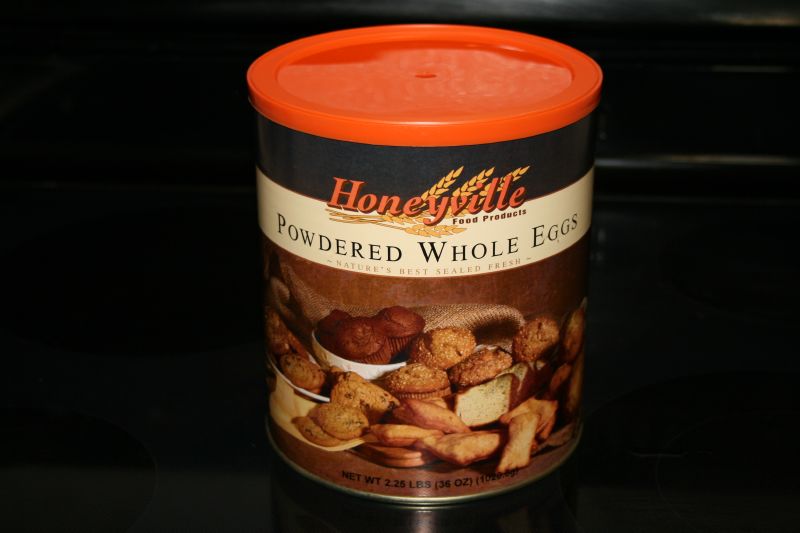
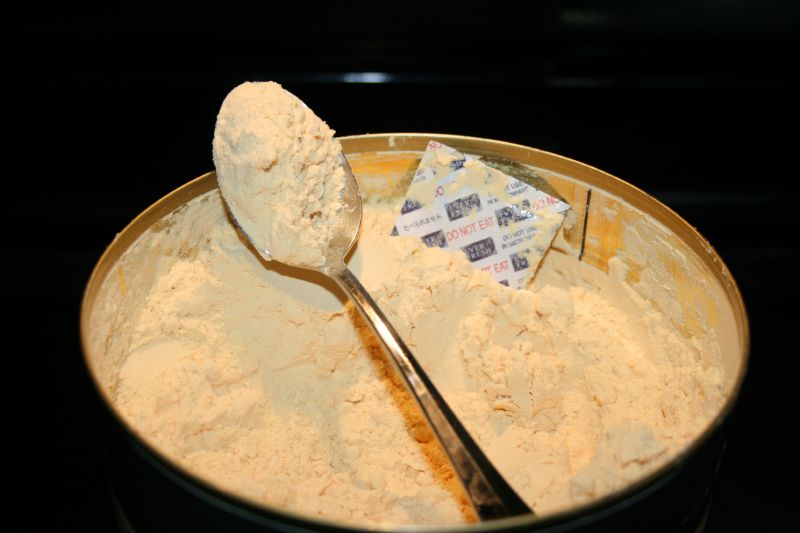
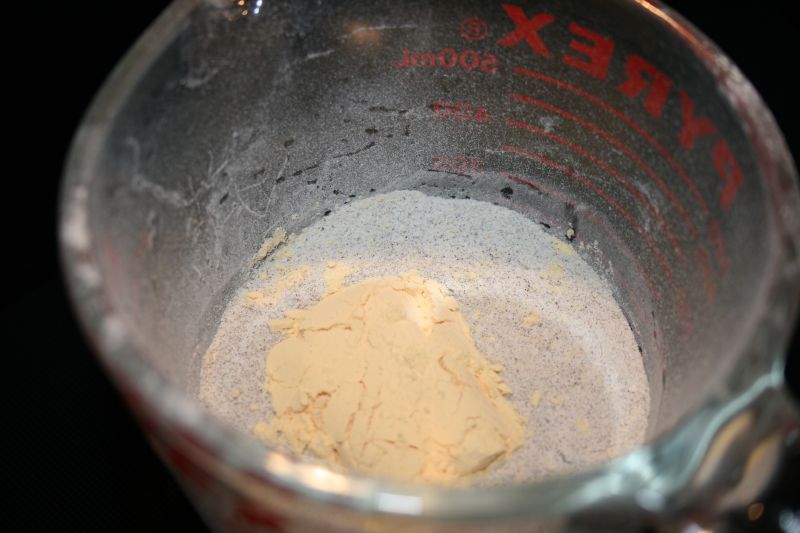
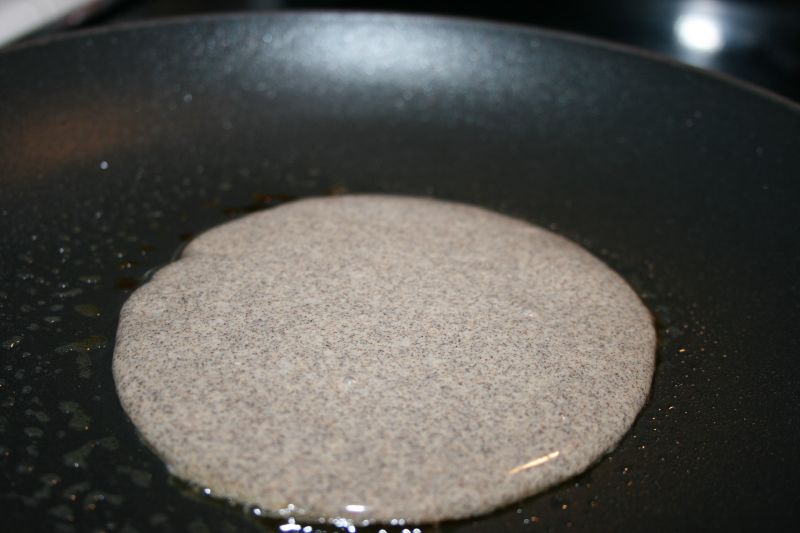
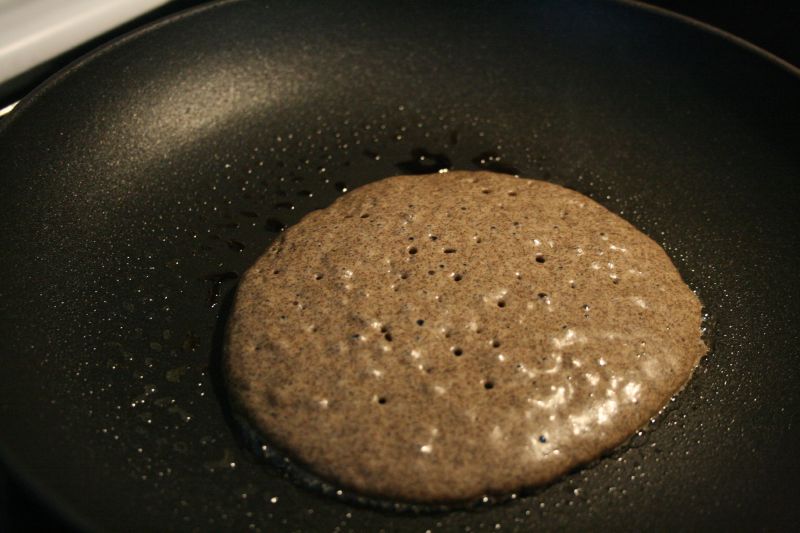











8 comments:
The price is all very well - and your pancakes look fantastic. But do you have any idea how badly the chickens were treated that produced the eggs that went into the powdered product?
Unless they were free range, organic eggs to start with they were probably raised like this - http://www.petatv.com/tvpopup/video.asp?video=mym_chickens_egg&Player=wm
Not really worth it for cheap pancakes is it?
I really like your blog, by the way
x
Very interesting. I've never heard of this product before.
Now I'm wondering if those buckwheat pancakes are SB friendly. Any white flour?
Well, the point is that they were likely not treated any differently than the standard fresh eggs which I was buying at the store previously. That doesn't make it right, but it's a wash in terms of previous practice. A better choice would indeed be to either not eat eggs at all, or eat ones that I have verified with my own eyes are treated well. Unfortunately, I've read that many of the organic or free-range hens are barely treated better (e.g. small doors with 'access', but no real outside time).
I also have an egg-replacer (vegan) product which I purchased recently and intend to post about in the near future.
Thanks for providing the counterpoint to the economy of the eggs.
Hi Kalyn,
I threw out the package of course, but Bob's Red Mill has a really nice website that has a lot of product info, including nutritional info and ingredients:
Organic Stone Ground Buckwheat, Organic Stone Ground Whole Wheat Pastry Flour, Wheat Gluten, Organic Evaporated Cane Juice, Baking Powder (Monocalcium Phosphate, Bicarbonate of Soda, Cornstarch), Sea Salt.
Hello,
You have an excellent blog with a fantastic load of posts. So very loaded with facts and photos also. Truly one of the nicest we have ever come across, both in terms of the quality of the posts and the amount of factual information abounding therein.
We had a question for you about the powdered eggs. We are planning on buying some for storgage purposes and camping and so forth, and we have come up with about 50/50 on this...
The Honeyville site says that each can is = to "81-90" fresh whole eggs.
Many other sites we have seen say what you did which is that there are 170 eggs per can.
Being as it is their product I am more inclined to believe their assertions, especially considering that if there were nearly twice the amount advertised it could only help them....
But... so many sites have said that there are approx 170 eggs per can it makes me wonder if some intern didn't post incorrectly.
So... What we are wondering is have you any experience in using an entire can? If so have you any knowledge of how many eggs worth you got out of it?
If not, could you weigh one T of the powder out on say an ounce scale and report on it? That way we could deduce the actual amount of eggs by converting the ratio of ounces (or portions thereof) per portion (single egg) and thereby divide it from the 2.25 pounds in each can.
Even if you cannot do or don't know, thank you anyway for your blog. So prolific!
So happy you are enjoying my blogging efforts! I found the 170 egg figure written in the "Nutrition Facts" on the side of the actual can! I says:
Serving Size (One Egg) = 1 Tbsp (Dry) (6g)
Servings per container: 170
I've used one whole can since first purchase and am working through the second one. The first can stayed good the whole few months. My experience confirms it even works better than fresh eggs in pancakes and baked goods. And I use it all the time to make omelets mixed with fresh eggs to good effect.
Thank you so much. We are ordering a case from them on Monday! Can't wait to try it.
We just bought some of these today. I had to try and make some scrambled eggs to see if they would taste the same as real eggs. When I was cooking them, it became apparent very quickly that they do not cook the same as a regular egg. The flavor is very similar if not the same however the texture is different and they don't stick together like regular eggs. I don't know how you could make an omelet with these eggs if you don't mix fresh eggs. If possible I would like to replace fresh eggs with this product. Have you had any success at making omelets with out adding fresh eggs. If you have any pointers I would appreciate it. Maybe adding some oil will help or something else to get them to the same consistency of fresh eggs.?
Post a Comment